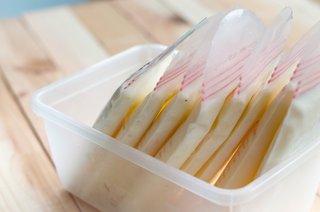To minimise waste, store expressed breast milk in small amounts. This way, if your baby only takes a small amount, there will not be as much waste. Storing in smaller amounts also means quicker defrosting time if your baby wants more.
Your breast milk contains essential enzymes, hormones and antibodies. These are vital for your baby’s normal growth, development and good health. Storing it safely makes sure those immune properties also help protect the milk from bacteria growth while it is being stored.
Fresh milk is best for your baby. This is milk that has been expressed and then put in a fridge. Fresh milk can also be safely stored for up to 24 hours in an insulated cooler bag with frozen ice packs.
When refrigeration is not possible, freezing is a good option.
These storage guidelines are for full-term healthy babies. If your baby is sick, premature, or hospitalised, your hospital will have their own milk storage guidelines that you will need to follow.
Containers for expressed milk
Use a clean container. Any container will do as long as it has an airtight seal and can be sterilised and labelled easily. You may also choose to use disposable single-use breast milk storage bags.
Breast milk storage bags
These are very handy for storing small amounts of milk. You may need to double bag to protect the bag from ripping and to prevent freezer burn. You can also place the bags inside a container in your freezer to protect them.

Plastic bags take up less room in the freezer and are single-use items, so there is no washing involved. Some milk storage bags will connect directly to your expression device. This can help reduce waste.
You do not need to sterilise milk storage bags before use. But you should use them fresh from the pack so that they are as clean as possible.
Hard containers
Hard containers are made of plastic or glass. Research shows that you lose fewer milk fats and antibacterial cells when you use a hard plastic or glass container. The drawback for this is that they can take up a lot of space in your freezer.
Wash, rinse and sterilise all containers before using them for milk storage. Using a non-chemical sterilising method is best. This could include a steam steriliser or microwave steriliser.
Safely storing breast milk
Never add freshly expressed breast milk to previously cooled breast milk for storage.
Always leave about an inch of space at the top of the container to allow for expansion. Just like water for ice cubes, breast milk expands when you freeze it. Hard containers can pop open as the milk expands and bags can break.
Follow these steps to safely store your breast milk:
Squeeze out the air at the top of the bag and fasten it an inch above the milk.
- Lay the bags down in a container in the freezer because flatter packages will thaw more quickly.
- Make sure they’re sealed well so that they do not leak.
- Label each container with the date.
- Use the oldest milk first.
- Keep all your hard containers of milk together inside a larger plastic box.
- A large lunch box is ideal for storing the oldest milk at the front.
How long to store breast milk
You can keep stored milk:
- sealed outside of the fridge for up to 4 hours in temperatures less than 20 degrees
- in a fridge for up to 5 to 7 days (place it on a shelf and not inside the door)
- in a fridge freezer for 3 to 6 months
- in a deep freezer for up to 12 months
Important
Store breast milk at the back of the fridge, on the shelf above the vegetable compartment. This is the coldest part of the fridge.
Do not store in the fridge door as the temperature is less consistent.
Previously frozen milk
Previously frozen breast milk can be kept in the refrigerator for 24 hours after thawing.
This means that you can thaw the milk for all your baby's feeds overnight in the refrigerator if you wish. This can make it faster to prepare when your baby is hungry.
Important
Milk that has thawed should not be refrozen.
Storing breast milk on the move
Research shows that bacteria does not grow quickly in human milk. It can be kept safely at room temperature for up to 4 hours.
Do not worry if you cannot rush your milk to the fridge right after you express. But do refrigerate the milk as soon as possible. Keep it cool when travelling, using an insulated container with reusable ice packs.
It is normal for the smell of refrigerated or frozen expressed milk to change over time. Many foods you may eat - such as eggs, cheese or fish - can cause a change in smell of refrigerated or frozen milk.